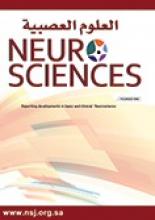Abstract
OBJECTIVE: Cerebral palsy is a chronic non-progressive disorder of early onset primary effects of cerebral palsy include muscle spasm or tightness, involuntary movements, abnormal gait patterns, abnormal sensation and perception. Neuromuscular electrical stimulation can be effective means of managing increased muscle tone, of facilitating voluntary motor control, and of improving gait pattern. The purpose of this study was to evaluate the effect of therapeutic electrical stimulation on gait patterns in children with hemiplegic cerebral palsy and to investigate to which extent the increased muscle tone will be decreased after electrical stimulation.
METHODS: Twenty two children with hemiplegic cerebral palsy, their ages ranging from 5 to 9 years were involved in the study. They were divided into 2 equal groups; experimental and control group. The experimental group continued with their current physiotherapy regime plus surface electrical stimulation of the anterior tibial muscle of the hemiplegic leg for one hour per day for 12 weeks. While the control group continued with their current physiotherapy regime with no change. All children of the study were evaluated before and after 12 weeks of treatment. Items of evaluation were gait patterns by method of foot print and the degree of spasticity through the ratio Hofman/Myogenic ratio.
RESULTS: The results showed a significant improvement in gait patterns of children who received electrical stimulation as well a significant reduction of spastic muscle tone through the reduction of Hofman/Myogenic ratio. While the control group did not show any significant change.
CONCLUSION: The results of this study indicated that, with careful supervision, electrical stimulation can be used as an adjunct therapy for the improvement of gait patterns in children with cerebral palsy with the associated benefit of improved active movement and muscle power.
- Copyright: © Neurosciences
Neurosciences is an Open Access journal and articles published are distributed under the terms of the Creative Commons Attribution-NonCommercial License (CC BY-NC). Readers may copy, distribute, and display the work for non-commercial purposes with the proper citation of the original work.






